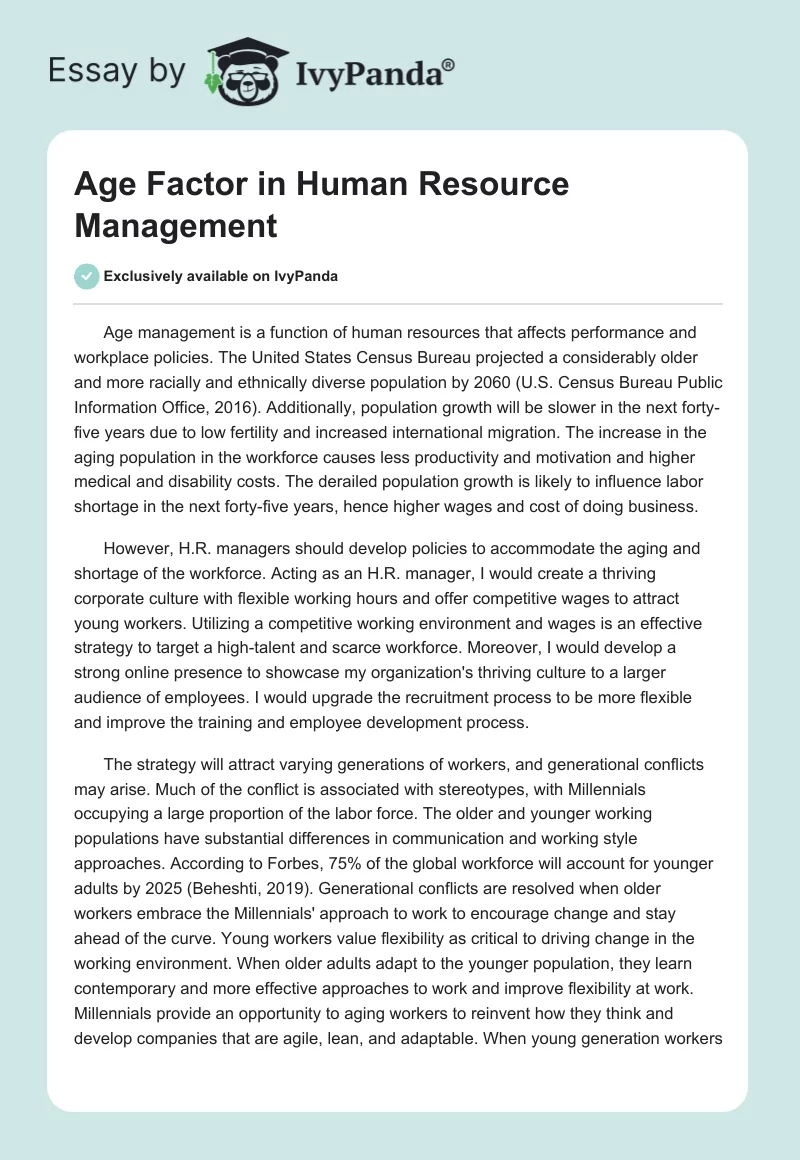Age management is a function of human resources that affects performance and workplace policies. The United States Census Bureau projected a considerably older and more racially and ethnically diverse population by 2060 (U.S. Census Bureau Public Information Office, 2016). Additionally, population growth will be slower in the next forty-five years due to low fertility and increased international migration. The increase in the aging population in the workforce causes less productivity and motivation and higher medical and disability costs. The derailed population growth is likely to influence labor shortage in the next forty-five years, hence higher wages and cost of doing business.
However, H.R. managers should develop policies to accommodate the aging and shortage of the workforce. Acting as an H.R. manager, I would create a thriving corporate culture with flexible working hours and offer competitive wages to attract young workers. Utilizing a competitive working environment and wages is an effective strategy to target a high-talent and scarce workforce. Moreover, I would develop a strong online presence to showcase my organization’s thriving culture to a larger audience of employees. I would upgrade the recruitment process to be more flexible and improve the training and employee development process.
The strategy will attract varying generations of workers, and generational conflicts may arise. Much of the conflict is associated with stereotypes, with Millennials occupying a large proportion of the labor force. The older and younger working populations have substantial differences in communication and working style approaches. According to Forbes, 75% of the global workforce will account for younger adults by 2025 (Beheshti, 2019). Generational conflicts are resolved when older workers embrace the Millennials’ approach to work to encourage change and stay ahead of the curve. Young workers value flexibility as critical to driving change in the working environment. When older adults adapt to the younger population, they learn contemporary and more effective approaches to work and improve flexibility at work. Millennials provide an opportunity to aging workers to reinvent how they think and develop companies that are agile, lean, and adaptable. When young generation workers individually express their motives, they benefit from coaching, instructions, and encouraging relationships with older professionals.
References
Beheshti, N. (2019). The clash of the baby boomers and Millennials: How can we all get along? Forbes. Web.
U.S. Census Bureau Public Information Office. (2016). U.S. Census Bureau projections show a slower growing, older, more diverse nation a half century from now – population – newsroom – U.S. Census Bureau. United States Census Bureau. Web.
Williams, C. (2018). MGMT10: Principles of Management. Cengage Learning. Web.


